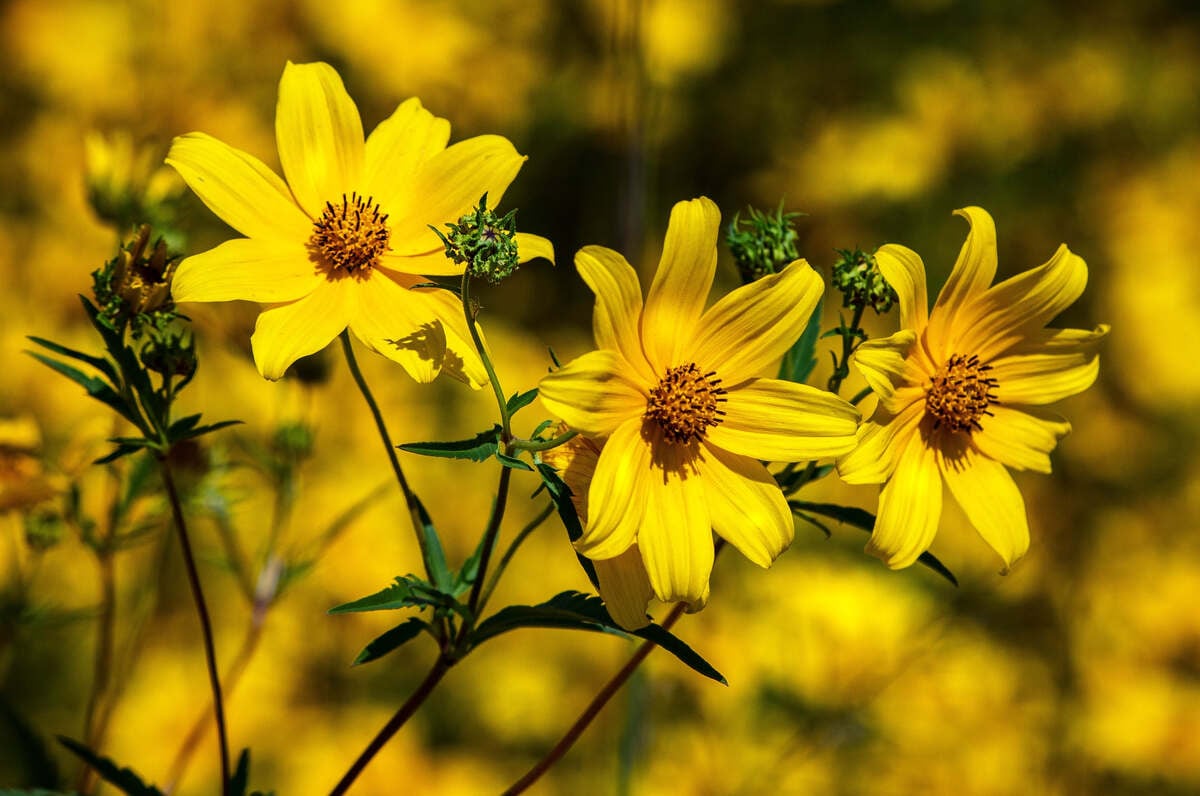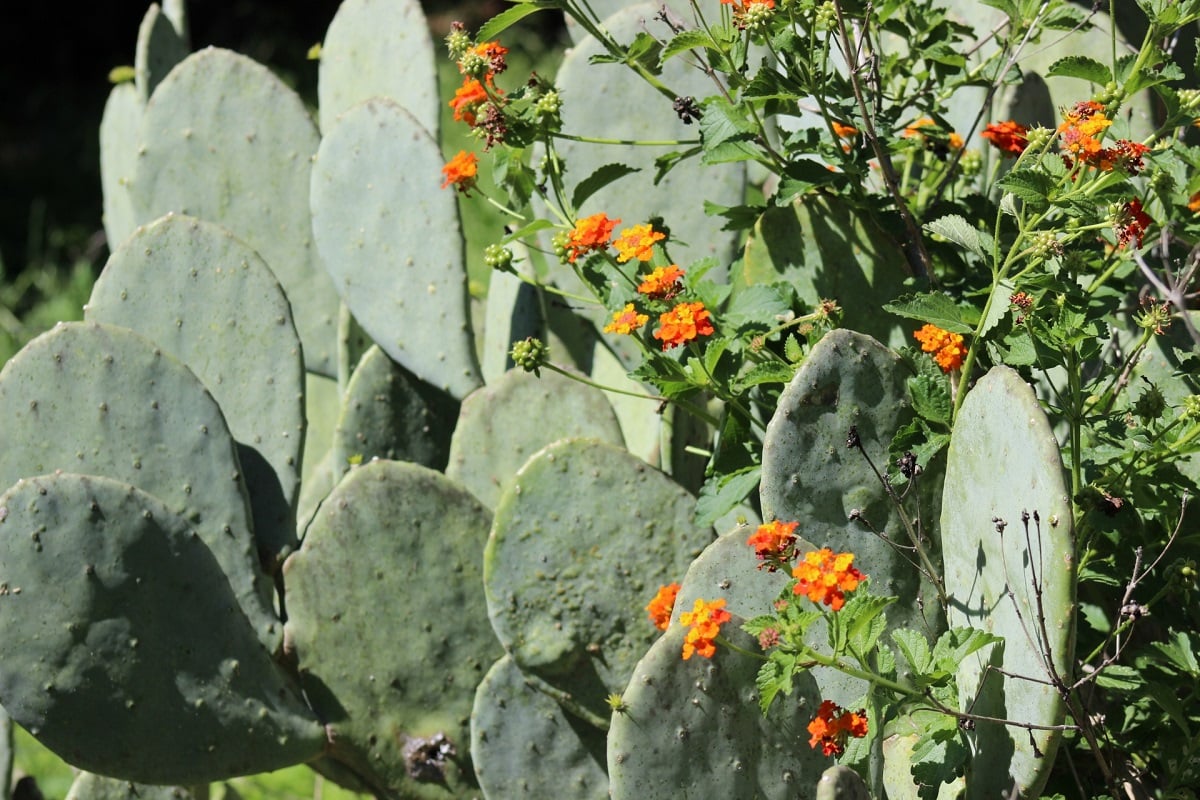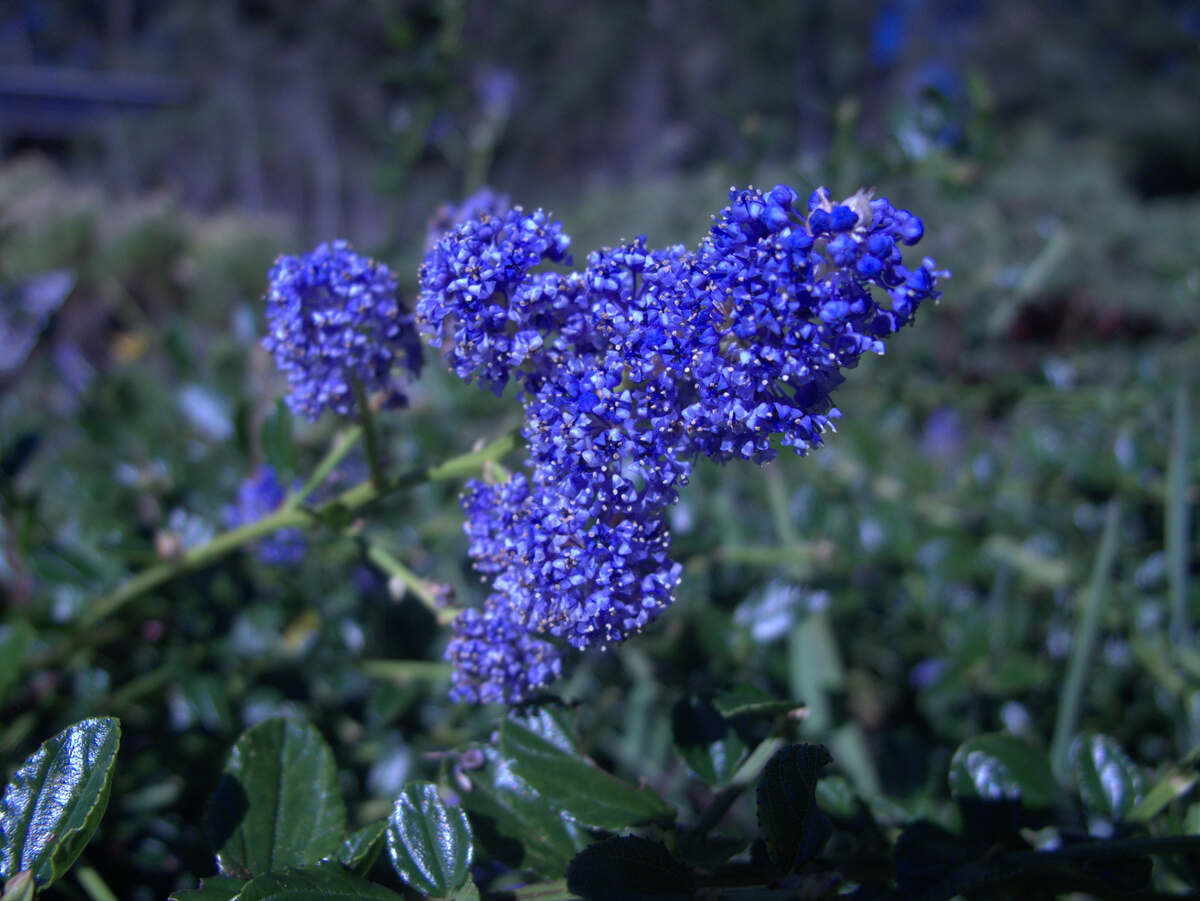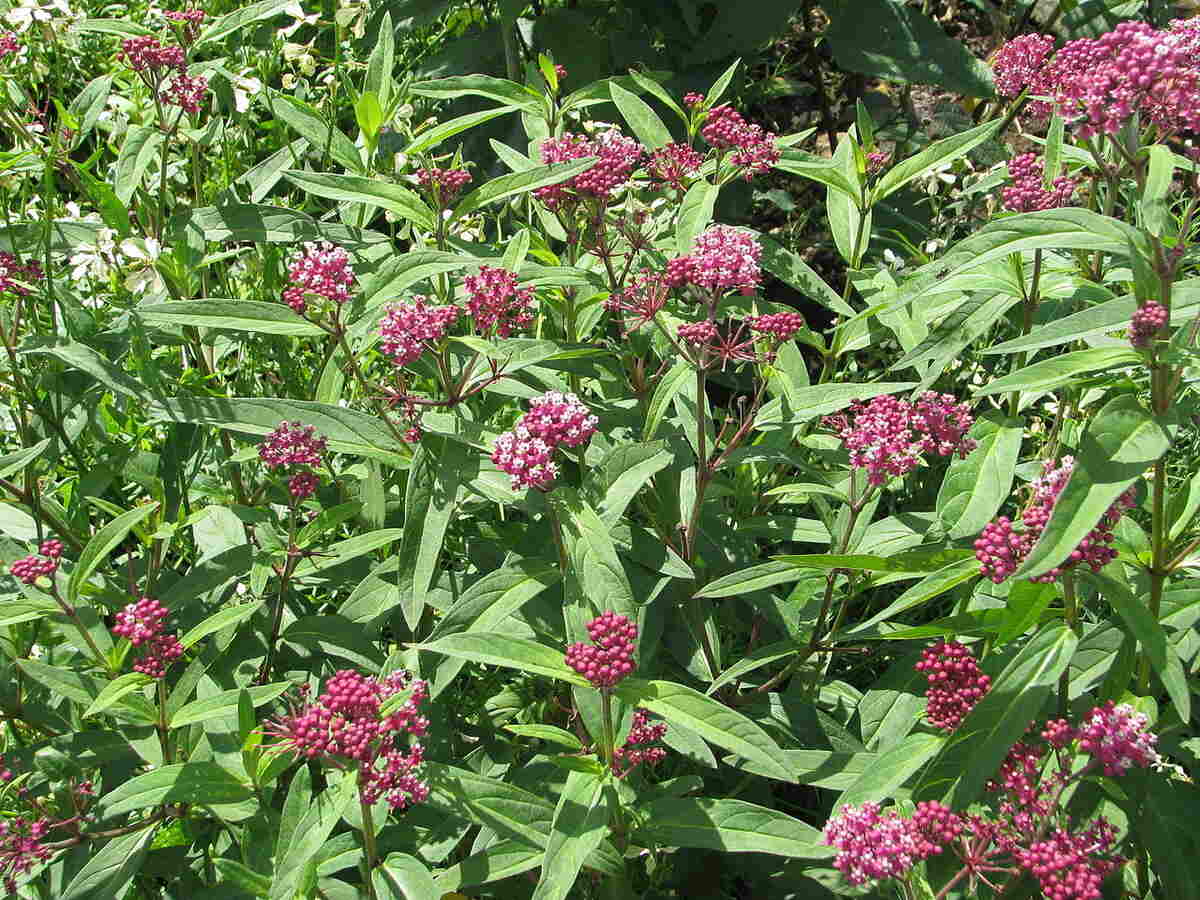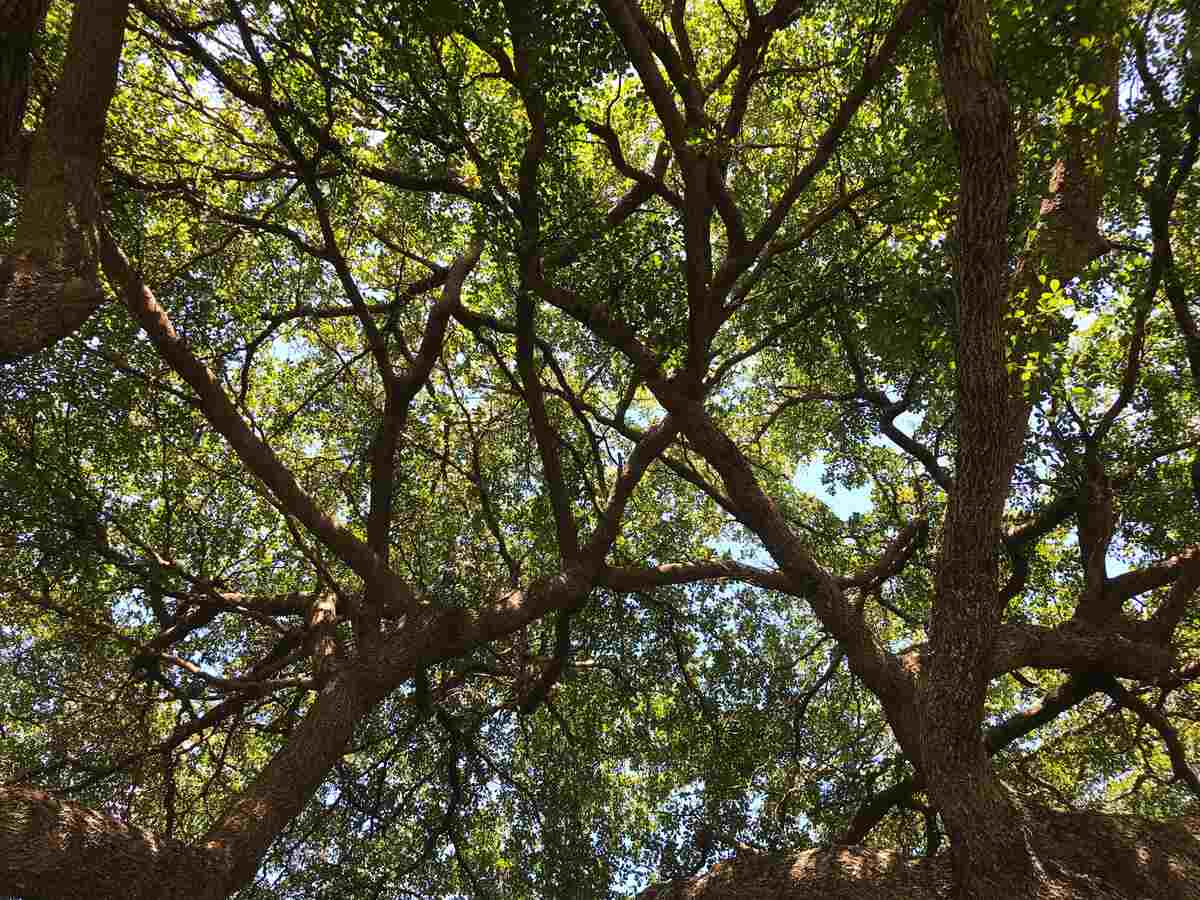
When it comes to landscaping, “throwing shade” is all about selecting the right trees to create an environment that offers serenity and boosts curb appeal. Some of these trees grow a bit slowly, taking years to provide the benefits you want. That’s why we’ve compiled a list of the 13 best fast-growing shade trees you can plant in your yard.
- 13 Fast-Growing Shade Trees for Your Yard
- 1. Red Maple (Acer rubrum)
- 2. Tulip Poplar (Liriodendron tulipifera)
- 3. Weeping Willow (Salix babylonica)
- 4. Nuttall Oak (Quercus texana)
- 5. Silver Maple (Acer saccharinum)
- 6. Sycamore (Platanus occidentalis)
- 7. Japanese Zelkova (Zelkova serrata)
- 8. Northern Catalpa (Catalpa speciosa)
- 9. Quaking Aspen (Populus tremuloides)
- 10. Dawn Redwood (Metasequoia glyptostroboides)
- 11. Paper Birch (Betula papyrifera)
- 12. River Birch (Betula nigra)
- 13. American Sweetgum (Liquidambar styraciflua)
- FAQ
13 Fast-Growing Shade Trees for Your Yard
1. Red Maple (Acer rubrum)
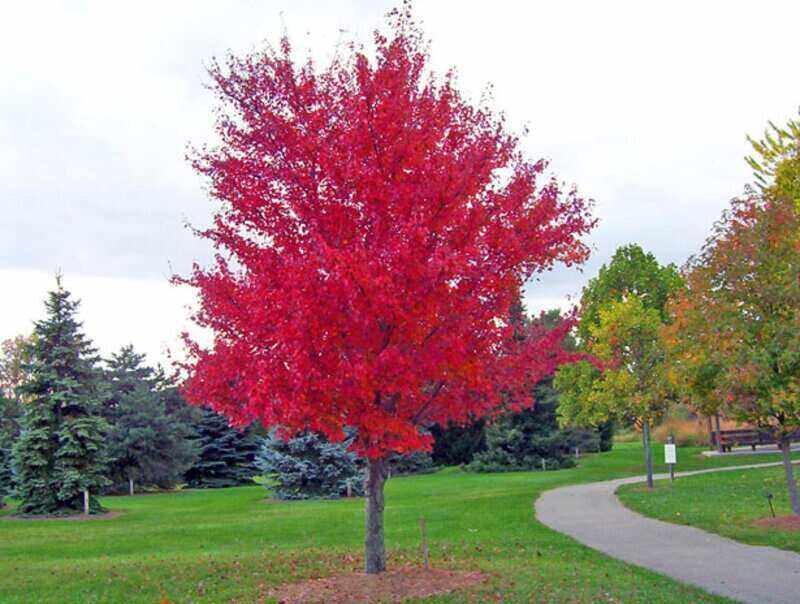
Named for its brilliant fall color — red-orange leaves against even redder stems — this deciduous tree makes an excellent choice for an accent in your landscape design. This shade tree grows fast, and yet is a great choice if you also want a low-maintenance shade tree.
Depending on the type, red maples produce golden-yellow instead of red leaves. Besides fall interest, this tree also offers bursts of small, red blooms in early spring.
USDA Hardiness Zone: 3 to 9
Examples of red maple cultivars: Autumn Blaze, Brandywine, and Embers
Care: Low maintenance. Needs full sun or partial shade and moist, well-drained soil.
Growth rate: 13 to 24 inches per year; matures at a height of 40 to 70 feet.
Flowering: Small, red blooms in early spring
Cost: Bare-root tree ($22) or potted plant ($50 to $100)
Pro Tip: Did you know that the red maple is one of the 15 best shade trees for Salt Lake City Yards?
2. Tulip Poplar (Liriodendron tulipifera)
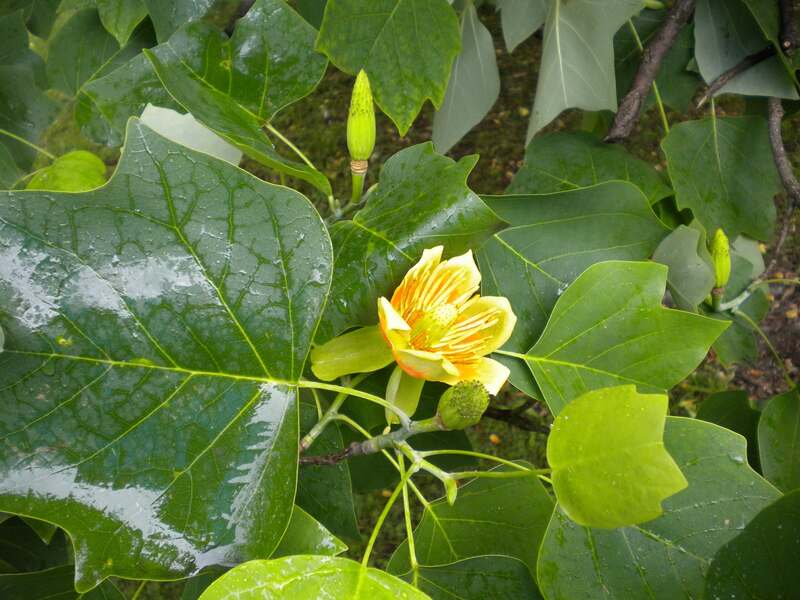
One of the biggest and fastest-growing shade trees, the tulip poplar reaches heights of up to 120 feet. When choosing a location, make sure it offers plenty of room for this large shade tree to grow and spread — tulip poplar is not suited for small yards. Thriving in full sun or partial shade, this deciduous tree does tend to drop petals and sap, so keep that in mind, too. This species attracts hummingbirds.
USDA Hardiness Zone: 4 to 9
Examples of tulip tree cultivars: Arnold, Little Volunteer, and Fastigiatum
Care: Water and fertilize regularly until established. Mulch to protect roots/maintain moisture.
Growth rate: 3 feet per year with a 35- to 50-foot spread.
Flowering: Yellow, green, or orange flowers in spring to early summer.
Cost: $50 to more than $120
3. Weeping Willow (Salix babylonica)
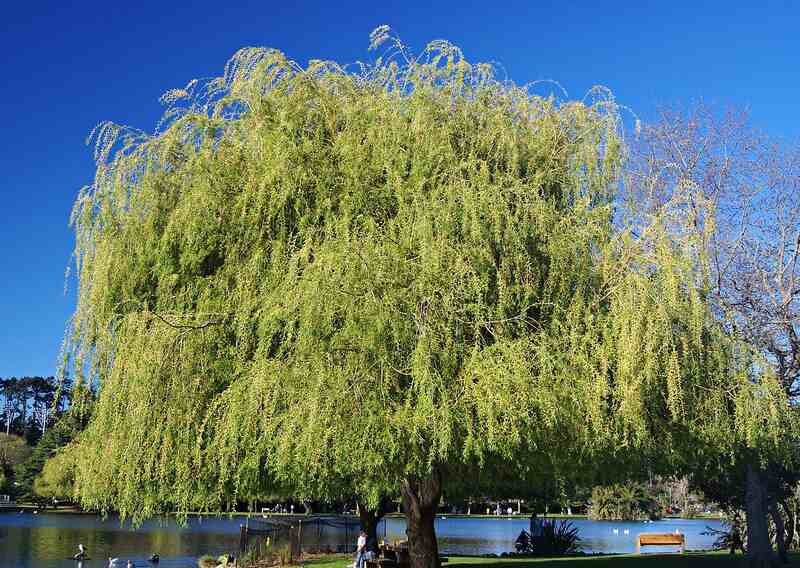
Quite the statement maker, weeping willows boast a rounded crown of drooping (“weeping”) leaves, making the weeping willow one of the best trees for shade. Colored green in spring and summer, the leaves turn yellow in fall, just before they drop. Give this deer-resistant, tall shade tree a large area to grow — bonus points if it’s near standing water, such as a pond or lake.
USDA Hardiness Zone: 6 to 8
Examples of weeping willow cultivars: Scarlet Curls, Tristis, and Umbraculifera
Care: Fertilize until established. Grow in full sun.
Growth rate: 10 feet per year; maturing to a height of approximately 40 feet with an equal or greater spread.
Flowering: Yellow blooms not of any decorative value.
Cost: $20 to $115, depending on size
Pro Tip: Weeping willow is one of the best trees for making a living fence in your garden.
4. Nuttall Oak (Quercus texana)
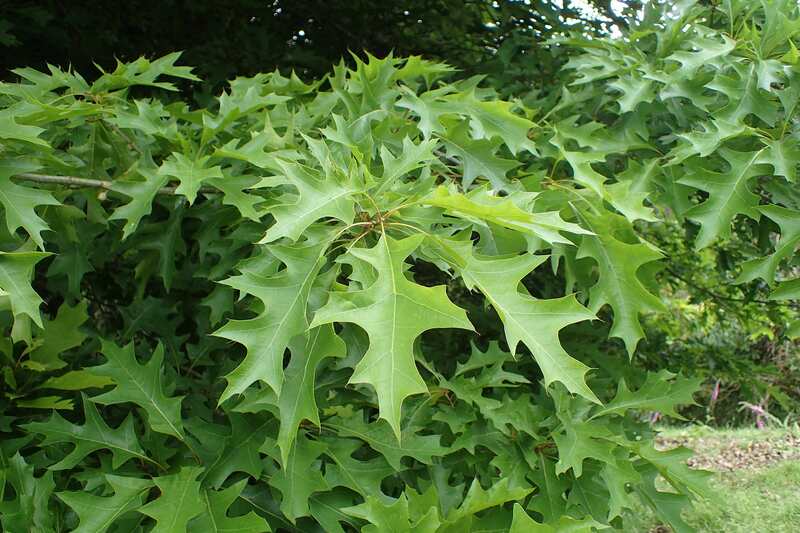
Of the more than 500 species of oak trees, several make good shade trees and also have a fast growth rate. Nuttall oak, for instance, adds up to 2 feet of height each year. Characterized by its reddish-brown acorns, this deciduous tree provides bursts of fall color with red-orange leaves.
Other fast-growing shade trees in the oak family that provide the best shade include:
- Pin oak
- Northern red oak
- Sawtooth oak
USDA Hardiness Zone: 6 to 9
Examples of oak tree cultivars: Sangria and Arcade
Care: Easy. Soil can be wet or dry, but preferably acidic. Plant in full sun.
Growth rate: Up to 4 feet per year; matures to a height of 40 to 60 feet.
Flowering: Inconspicuous brown flowers in spring.
Cost: $90 (live plants)
Pro Tip: Did you know that the Nuttall oak is one of the 6 Best Trees to Plant in Houston?
5. Silver Maple (Acer saccharinum)
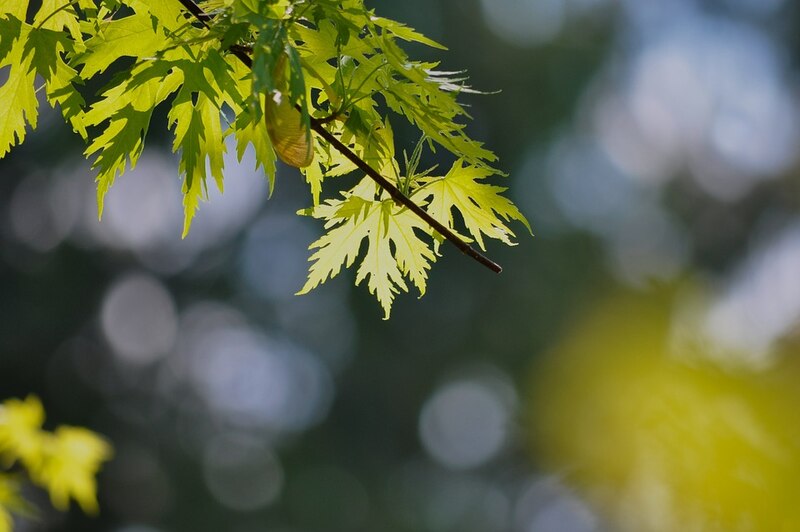
Courtesy of its green leaves’ silvery undersides, the silver maple offers not only nice shade to your landscape design, but also a hint of shimmer. And, because this tree can flourish in just about any soil condition — including super wet ones — it makes an excellent choice for a rain garden.
USDA Hardiness Zone: 3 to 9
Examples of silver maple cultivars: Blair, Lutescens, and Silver Queen
Care: Requires full sun or partial shade and 10 feet of space for roots to spread.
Growth rate: More than 2 feet per year; matures up to 80 feet tall and 50 feet wide.
Flowering: Non-showy gold, green, or red blooms in winter and spring.
Cost: $15 (bare root)
Pro Tip: Don’t plant this big shade tree too close to your house. Once it gets large, its roots can affect the foundation.
6. Sycamore (Platanus occidentalis)
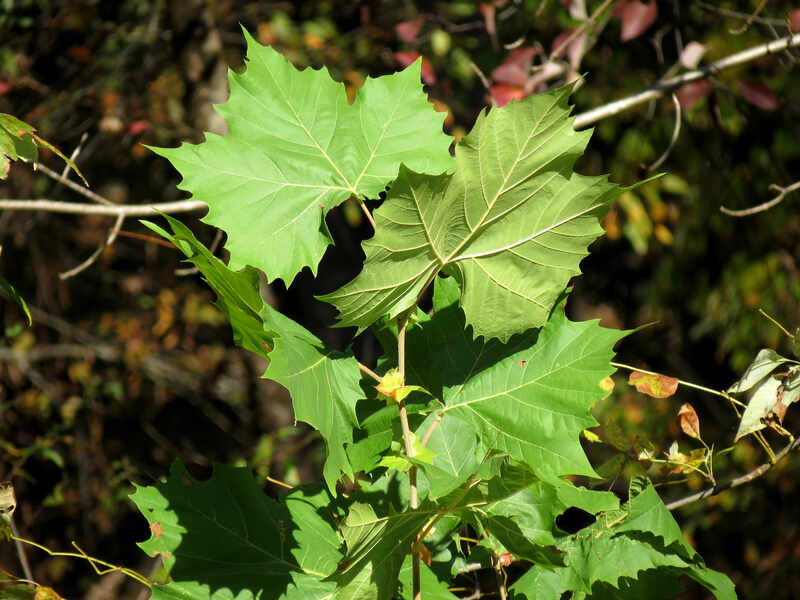
The towering sycamore graces large landscapes with its shade in spring and summer and bursts of fall color in autumn. Deer-resistant but attractive to birds for food and shelter, this fast-growing deciduous tree needs full sun and well-drained soil. Surround it with coniferous evergreens to protect it from the wind. U.S. colonists used the wood for buttons.
USDA Hardiness Zone: 4 to 9
Examples of sycamore cultivars: Howard, Bloodgood, and Liberty
Care: Water regularly to avoid pest and disease problems and encourage growth; mulch in winter to maintain moisture; and prune occasionally.
Growth rate: About 2 feet per year; can grow as tall as 100 feet.
Flowering: Inconspicuous yellow, green, or red flowers in the spring.
Cost: $25 (bare root) and between $90 and $140 for potted, depending on size.
7. Japanese Zelkova (Zelkova serrata)
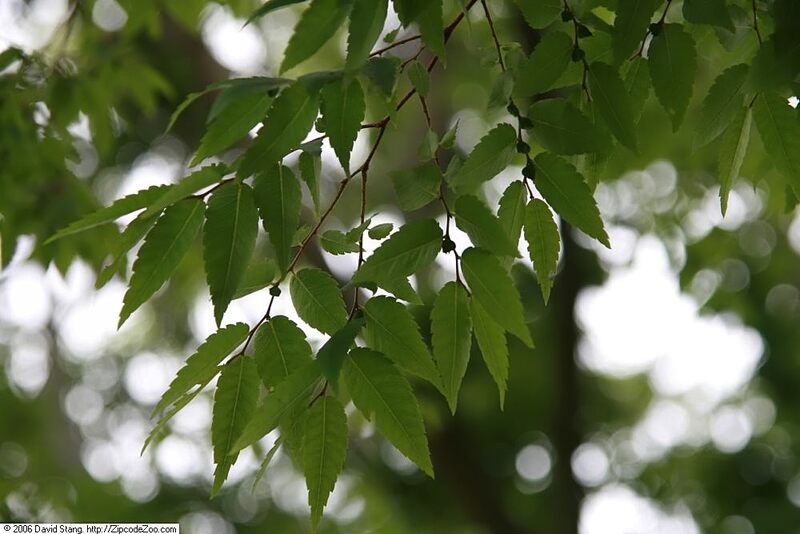
If you’re looking for a tall shade tree that will thrive in an urban setting, consider the Japanese zelkova. Tolerant of pollution, wind, heat, drought, and a variety of soil types, this deciduous tree is perfect as a fast-growing tree for city gardening.
Come fall, enjoy watching the usually green leaves turn copper, gold, orange, and reddish-purple. Japanese zelkova makes the best shade tree for your front yard and it will give your neighbors a show of colors throughout the year.
USDA Hardiness Zone: 5 to 8
Examples of zelkova cultivars: Autumn Glow, Spring Grove, and Wireless
Care: Full sun/partial shade and well-drained soil; prune every fall.
Growth rate: 1 to 2 feet per year; can reach a height of 80 feet.
Flowering: Non-showy, green flowers in spring.
Cost: $22 (bare root)
8. Northern Catalpa (Catalpa speciosa)
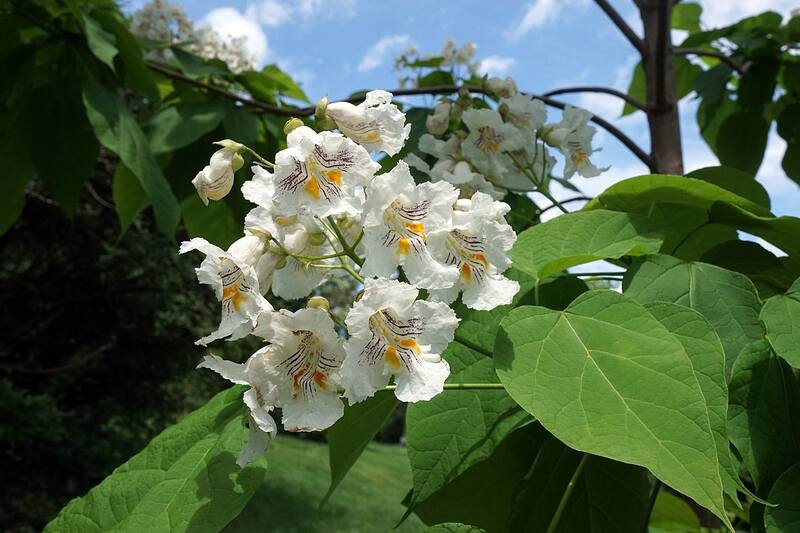
The northern catalpa, with its name derived from the Native American word kutuhlpa (meaning “head with wings,” describing the bell-shaped blooms), is a drought-tolerant tree that is a welcome addition to a spring landscape.
The catalpa’s very large, green leaves are another showstopper. A good and fast-growing shade tree, you won’t have to wait long to enjoy a book under its canopy. Plant it in full sun or partial shade for best results.
USDA Hardiness Zone: 4 to 8
Examples of northern catalpa cultivars: Hiawatha 2, Aurea, and Nana
Care: Easy. Water when the soil is dry; fertilize and prune yearly in the spring.
Growth rate: 1 to 2 feet each year; matures at up to 60 feet tall and 40 feet wide.
Flowering: Showy and fragrant white flowers in spring and summer seven years after planting.
Cost: $15 (bare root)
9. Quaking Aspen (Populus tremuloides)
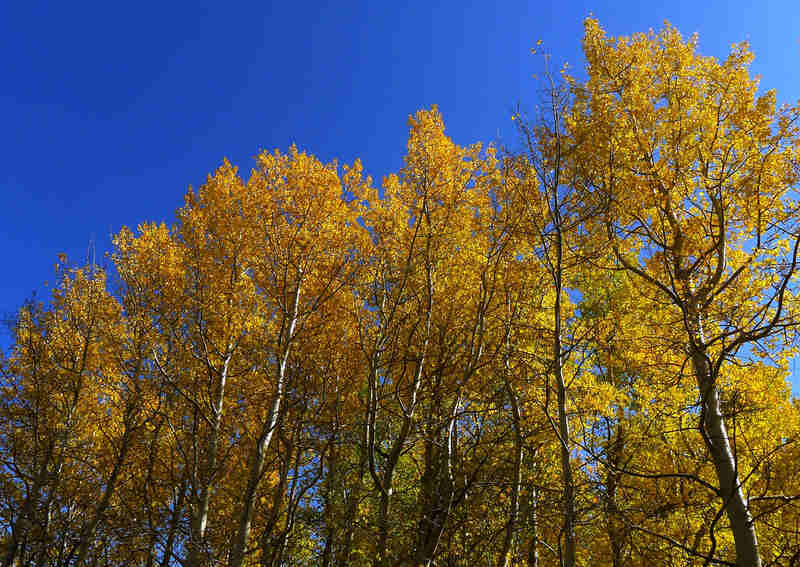
At the slightest breeze, and because of this tree’s flattened stalks, the quaking aspen’s leaves tremble, triggering a calming, rustling sound. Another plus? The quaking aspen’s brilliant, yellow fall foliage.
Boasting the widest natural range of any tree species in North America, the quaking aspen also can produce clones that can live for thousands of years. Pando, a 106-acre tree with 40,000 separate stems, is thought to be the largest living organism in the world and between 8,000-12,000 years old.
USDA Hardiness Zone: 1 to 7
Example of quaking aspen cultivar: Prairie Gold
Care: Plant in well-drained, moist soil.
Growth rate: More than 2 feet per year; reaches a height of up to 50 feet.
Flowering: Blue or silver ones in spring.
Cost: $17 (bare root) and $140 to $260 (potted), depending on size.
10. Dawn Redwood (Metasequoia glyptostroboides)
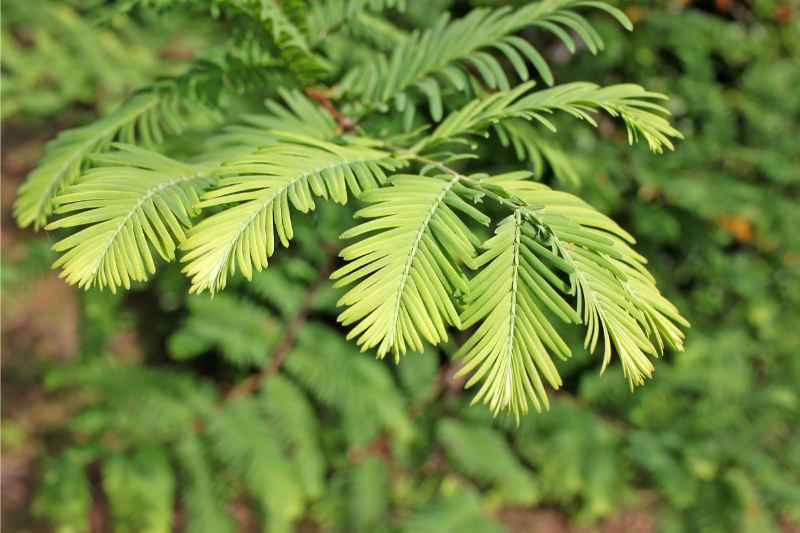
Let’s talk about another low-maintenance shade tree option. A deciduous conifer, the dawn redwood is deer-resistant and tolerant of standing water, which makes it an optimal choice for a water garden. Flourishing in the world since the dinosaur era, this fast-growing ornamental tree provides a show in the fall when its bright green leaves turn an orange- or reddish-brown color.
USDA Hardiness Zone: 5 to 8
Examples of dawn redwood cultivars: Miss Grace, Ogon, and Gold Rush
Care: Low; needs full sun and well-drained soil.
Growth rate: Up to 3.5 feet per year; matures to a height of up to 100 feet.
Flowering: Inconspicuous copper-colored flowers.
Cost: $25 (bare root)
11. Paper Birch (Betula papyrifera)
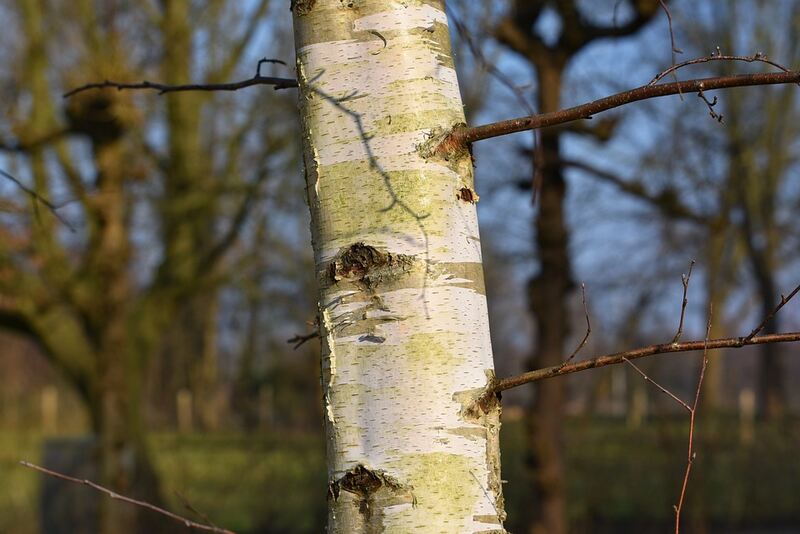
The dazzling part of this native tree? The paper birch’s peeling, white bark. Revealing another layer that’s orange-brown, the paper birch tree is a known water-lover that thrives best in cooler climates. Its thin canopy provides shade, and its dark green leaves turn bright yellow in autumn. Native Americans used this tree for many purposes, including canoes.
Because of paper birch’s medium size, it works when planted in groups of trees for backyard shade. Paper birch can be pruned to remain shrubby, so if you are looking for a shade tree for small yards, this one might be just the right match for you.
USDA Hardiness Zone: 2 to 7
Examples of paper birch cultivars: Snowy, Chickadee, and Renaissance Reflection
Care: Full sun or partial shade in a variety of soil types; fertilize and mulch every spring.
Growth rate: 1 to 2 feet per year; matures at up to 70 feet tall and 35 feet wide.
Flowering: Ornamental catkin flowers in copper or green each spring.
Cost: $17 (bare root)
12. River Birch (Betula nigra)
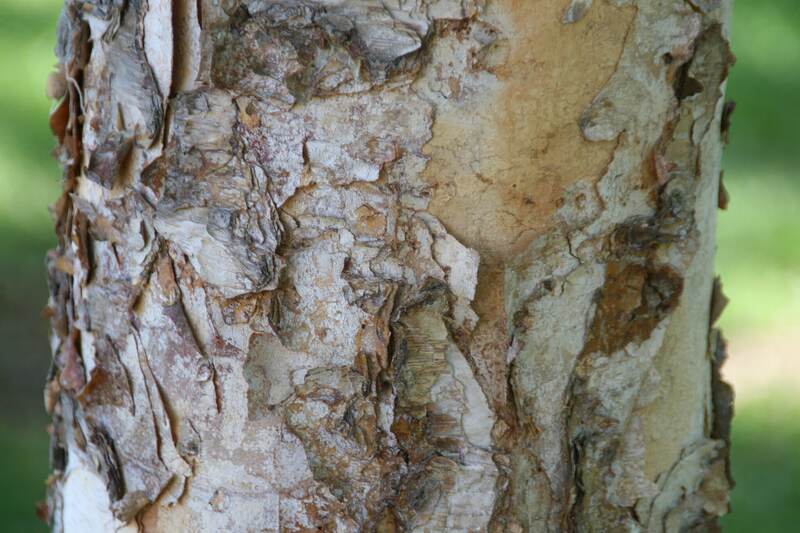
For a more heat resistant birch, consider the river birch. Out of the other native birch trees, the river birch is the only one that thrives in the South. But don’t worry, the river birch has the same ornamental characteristic of the paper birch: a beautiful paper-like bark that peels all-year round.
USDA Hardiness Zone: 4 to 9
Examples of river birch cultivars: Dickinson, Duraheat, Heritage, Little King and Royal Frost.
Care: Plant in moist, well-drained soil in full sun to get the best foliage color. But the river birch survives in partial shade too. Use bark mulch to keep the roots cool and a soaker hose to keep it moist. Prune only if necessary during the dormant season. Do not plant next to the house, as the falling branches can clog gutters.
Growth rate: 1.5 to 2 feet per year; can grow to a height of 70 feet tall and a width of 60 feet.
Flowering: River birch blooms in early spring with cylindrical, light green flowers and fruiting catkins.
Cost: $17 (bare root)
13. American Sweetgum (Liquidambar styraciflua)
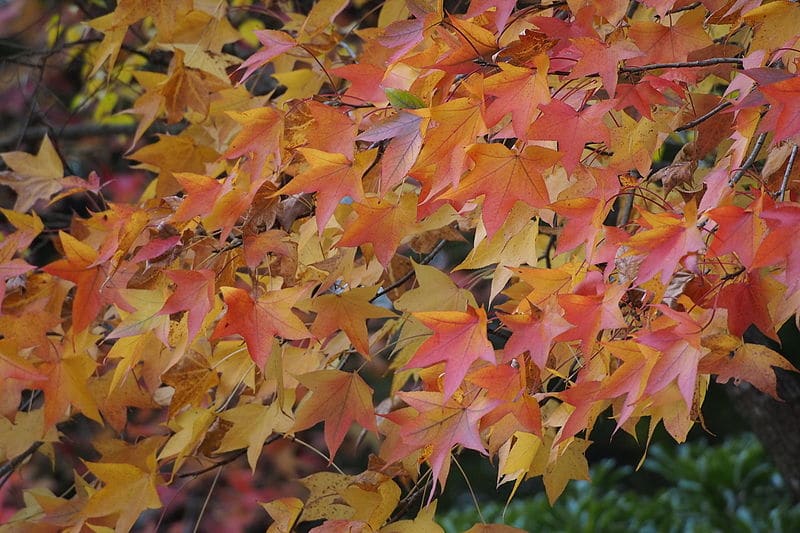
The American sweetgum is a native treasure that got its popular name from the gum it releases when wounded. This tall tree can reach 4 feet or more in trunk diameter. Its glossy leaves have a star-like shape and offer a delightful mix of colors in the fall, from the traditional orange and yellow tones to fantastic purple and bright red hues.
The small fruits that fall from the tree can be a handful from fall to spring, but the sweetgum’s size and resistance to adverse conditions (heat, drought, soil compaction, and animals such as deer and rabbits) make it a great shade tree.
USDA Hardiness Zone: 5 to 9
Examples of American sweetgum cultivars: Aurea, Aurora, Burgundy, Gumball, Palo Alto.
Care: This tree needs six hours of full sun daily, but tolerates partial shade. It grows in neutral to acidic conditions, and the soil must be moist but well-drained. American sweetgum must be planted in spring because of its shallow root system that needs three to four months to recover from transplanting.
Growth rate: 2 to 3 feet per year when in moist soil, but has a slower rate in dryer conditions. Mature trees can reach an impressive 100 feet tall and a width of 50 feet.
Flowering: During spring and summer, the tree blooms with yellowish-green clusters of flowers. The gumballs (as the fruits are popularly called) develop from female flowers and are a nuisance to homeowners.
Cost: Bare root costs around $17 and seeds cost around $5.
FAQ
What is the Fastest-Growing Shade Tree?
Of the 13 listed here, the one that grows the fastest is the weeping willow — it adds about 10 feet to its height each year, topping out at 40 feet. Next in line are Nuttall oaks at 4 feet per year, dawn redwoods at 3.5 feet per year, and tulip poplars at 3 feet per year.
What are the Fastest-Growing Trees for Shade in Australia?
Quick-growing shade trees Down Under include the following:
● Dwarf flowering gum tree
● Japanese maple tree
● Magnolia tree
● Pin oak tree
● Plane tree
● Red oak tree
● Tahitian lime tree
How Do I Plant My Tree?
You’ve picked the best fast-growing shade tree for your lawn. Now, you must plant the tree. But how? Planting your shade tree is easy; you can do it in the following steps:
1. Choose a site considering sunlight or shade, moisture, and nearby structures (e.g., your foundation, sidewalks, utilities).
2. Prepare the site by assessing and preparing the soil and digging the hole.
3. Prepare the tree by taking it out of its container and preparing the root ball.
4. Plant the tree.
5. Position the tree.
6. Stake the tree if the tree needs support or if it is very windy in your area.
7. Backfill the hole and water the tree.
8. Mulch the tree to provide moisture and help prevent weeds.
9. Fertilize the tree.
When to Call a Landscaping Pro
Ordering and planting young trees can be a DIY job, and as long as you’re sure you’ve chosen the right tree for the right place, you should be good to go. But if the idea of planting a whole entire tree, no matter the size, overwhelms you, get help from a local landscaping pro.
A tree care pro will help you select a location, choose the best shade trees for your backyard that match your design goals, and ensure the trees are planted correctly. The perfect shady spot for reading and sipping iced tea? Coming right up!
Main Photo Credit: Unsplash
